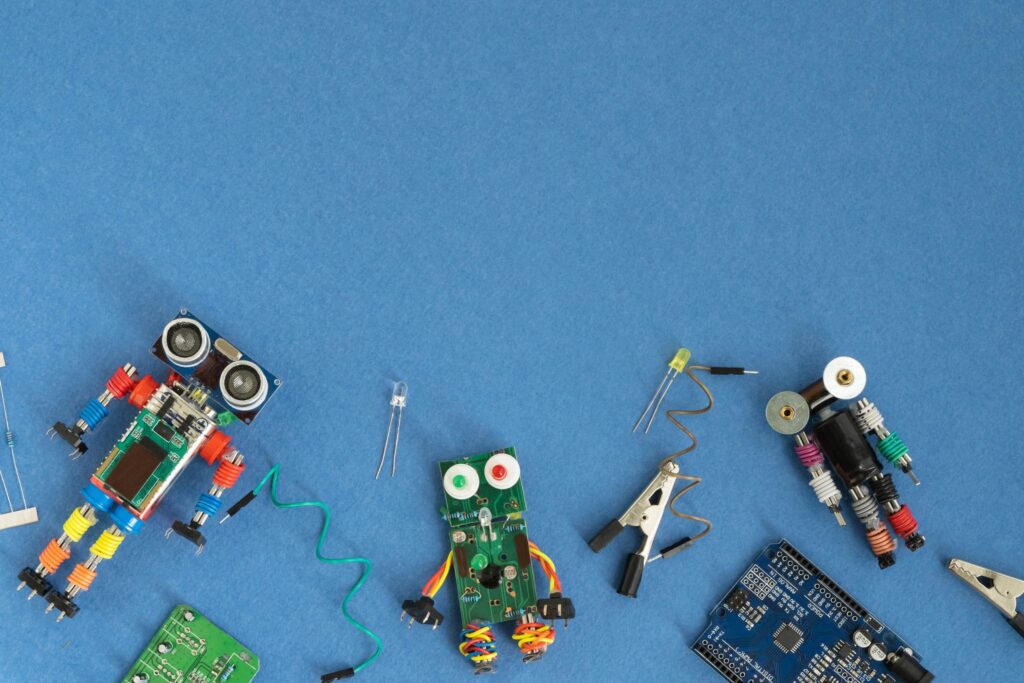Guide to 3D Printing For Children

What comes to mind when we mention “Robotics”? Do you recall Rosey, the robot from The Jetsons, who was endearing and eccentric? Or does your mind immediately go to Arnold Schwarzenegger’s intimidating Terminator cyborg? Or perhaps you believe that robotics is merely a form of entertainment and will never be truly implemented in our society. Read on to discover the reality of robotics and how your child can work and play in this very real and fascinating world.
Involving your child in robotics at a young age has numerous benefits as well. Not only will it help your child learn to overcome obstacles and solve issues, as well as encourage their creativity and build their patience, but it is also an excellent approach to introduce your child to coding. Perhaps one day they will be able to create a robot to clean your house and mow your yard!
Robotics Is a Real Science
Robotics is humanity’s future. General Motors invented the first robotic function in 1954, even though the area appears to be just at the beginning to a lot of people. The future of robots and the opportunities it presents are boundless, and so are its uses. The significance of robotics cannot be emphasized, from making our work easier in production through automation to enhancing our quality of life through sophisticated prosthetics and orthotics. Even surgery, cooking, and space exploration are made possible by robots.
In the 21st century, robotics is an interesting field for parents to teach to their children, and it is becoming more popular than ever (there were 12 million robotics units worldwide in 2020). However, how can you make your kid eager to learn more about these marvelous machines?
This guide is intended to help you achieve this task! As a parent, you will gain an understanding of what robotics is, how to complete a simple robotics project with your child, and the advantages of robotics classes.
What exactly is robotics?
Robotics is the application of science, technology, and engineering to the design and construction of machines capable of imitating human actions. These automated machines are known as robots. Obviously, when introducing robotics to a young child, such a technical concept would not be appropriate. NASA’s definition of robotics, which is suitable for young children, is “the study of robots.” Robots are machines that perform tasks, and you may watch these recommended films featuring robot themes or characters to pique your child’s interest in learning more about them.
The parameters for what constitutes a robot vary from person to person. Therefore, what distinguishes a robot from an ordinary machine? Robots commonly:
- Utilize sensors to interact with their surroundings.
- They are capable of mimicking human functions with minimal assistance.
- They can be configured with certain characteristics to assist in completing tasks.
- They are a mixture of a number of distinct machines.
- They are equipped with artificial intelligence
The Distinction Between AI and Robots
Despite the possibility of overlap, robots and artificial intelligence (AI) are fundamentally distinct. AI is a computer program’s capacity to replicate human intelligence on some level. Essentially, robots mimic human behavior by following pre-programmed instructions. In contrast, an AI thinks like a person and can “learn” new behaviors through interaction with the actual world. They are not mutually exclusive because robots can utilize AI to mimic human thought and behavior.
ToothBrush Bot: An Easy Robotics Project for Children
Your children will not soon construct robots with artificial intelligence. However, students may complete basic and entertaining robotics projects at home. These can pique their interest in robotics at a very early age. The ToothBrush Bot is an excellent first project for young children, as it can be assembled in less than thirty minutes.
This project takes a few supplies that are available at your local grocery store or home improvement center. You will need a toothbrush, a coin cell battery with associated wires, a vibrating tiny motor disc, and double-sided foam tape.
- Cut the toothbrush: Using pliers or scissors, remove the toothbrush’s head. For safety concerns, your youngster should not perform this task independently. If they are unhappy, remind them that they can complete the remaining steps alone.
- Apply the double-sided tape to one end of the toothbrush and remove the paper backing.
- Place the coin cell battery securely on top of the double-sided tape. The back of the coin battery will have two protruding wires. To expose the wires, bend them toward the opposite end of the toothbrush and remove the little pieces of insulation at the end.
- Remove the paper covering from the vibrating tiny motor disc and insert the adhesive-coated side on the opposite end of the toothbrush. The motor and battery must be positioned in the middle of the toothbrush. This will prevent the robot from becoming unstable while traversing the surface.
- Connect the battery and motor: In order for the robot to operate, the battery and motor wires must be linked. When it comes to electronics, red wires represent positive and black wires represent negative. Connect the red wires, ensuring that they are tightly twisted so that they do not fall loose. Connect the black wire by twisting it once to complete the circuit. This will result in the ToothBrush Bot vibrating.
- Have fun: Place the robot on any smooth, level surface. Observe it move and vibrate with kinetic energy. To turn off the device and conserve battery power, simply detach the black cable.
- Ask your youngster how they would use this technology to solve an issue in the real world.
More Methods to Teach Children Robotics
There are academic and life benefits to teaching robotics to children. Here are some reasons why enrolling your child in children’s robotics classes is a good idea:
Problem-Solving Skills
Robotics entails assessing problems from a variety of points of view and devising new and original solutions. Robotics teaches your child to be a problem-solver by constantly presenting them with difficult challenges and requiring them to devise creative solutions. And as they solve each problem, they become progressively more self-reliant, able to solve unfamiliar problems without your assistance. Similarly, they will experience failure in a constructive and positive manner that challenges them to develop solutions to the problem. This process ultimately teaches them that failing is nothing to be afraid of and helps them embrace these experiences as exciting challenges they eagerly anticipate.
They will develop their creativity.
Robotics is just beginning to be explored. This indicates that there are a great deal of unexplored ideas awaiting the discovery of a curious mind. This allows your child to expand their horizons and think creatively. Additionally, they can build and design robots that no one has ever seen. Whether building a robot from scratch or modifying an existing design, they are free to let their imagination run wild.
It helps cultivate patience
Unfortunately, one of the characteristics that children are not recognized for is patience, and we can guess that designing, building, testing, and continuously improving something requires a lot of it. As your child learns robotics, he or she will discover, however, that building the machine of their dreams requires time and effort. It will teach them to slow down and devote their full attention to each task in order to achieve the desired results.
Your child’s creations will come to life! This type of motivation can assist them in achieving their objectives, which will ultimately give them a great sense of accomplishment, pleasure, and self-assurance! Who wouldn’t want their child to have such experiences?
Team working skills
Children can complete smaller robotics projects (such as the toothbrush project) on their own, whereas larger projects require an entire team. Your child will build and/or design larger and/or more complex robots with their peers in robotics classes for children. This will educate students how to work as a productive group member and collaborate with others to solve an issue.
Your child can also easily learn to interact with others and make friends who will motivate them to achieve their full potential. This is not only beneficial for accountability, but it also teaches them the importance of teamwork and asking for assistance in maximizing their chances of success. Additionally, it is much more enjoyable to celebrate an awesome robot with friends!
Robotics Teaches Children to Code in an Entertaining Manner
Robotics can serve as an introduction to coding. By learning to code, individuals are able to program their robots with unique behaviors. A robotics instructor may demonstrate that by writing a few lines of code, students may make a robot’s hand wave or make the peace sign. Such creative uses of code can capture the curiosity of the next generation of programmers.
Is Your Youngster Too Young to Study Robotics?
There is no correct or incorrect response. Each child learns at a different rate, therefore it all depends on which robotics principles your child can grasp. It is believed that certain four-year-olds are capable of tackling robots. Others are not prepared for robotics until they are 8-9 or even 10-12 years old.
Since you as a parent know your child best, the decision is yours to make. However, there are robotics programs designed for various age groups.



